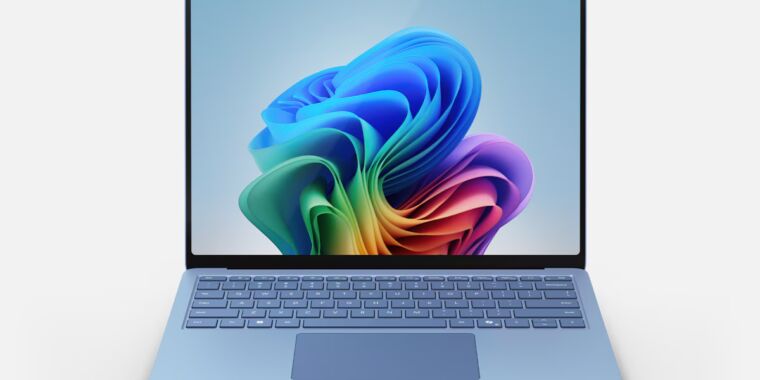Microsoft
Microsoft is announcing some fairly major changes for Windows and the Surface lineup as part of its Build developer conference this week, but there’s one thing that’s definitely not coming, at least not right now: a Windows 12 update.
Speculation about the “Windows 12” update began propagating at some point last year in reports that suggested that Microsoft was shifting back to a three-year release cycle like the ones used for Windows Vista, 7, 8, and 10 in the late 2000s and early 2010s.
And Microsoft may have intended to call this fall’s release “Windows 12” at some point, and it does come with substantial changes both above and under the hood to better support Arm systems and to emphasize Microsoft’s AI focus.
“We really focused on modernizing this update of Windows 11,” said Microsoft Corporate Vice President of Windows and Devices Pavan Davuluri at a technical briefing on Microsoft’s campus in mid-April. “We engineered this update of Windows 11 with a real focus on AI inference and taking advantage of the Arm64 instruction set at every layer of the operating system stack. For us, what this meant really was building a new compiler in Windows. We built a new kernel in Windows on top of that compiler. We now have new schedulers in the operating system that take advantage of these new SoC architecture.”
Microsoft didn’t say whether the updated system components would have user-noticeable benefits for users of current x86 systems, though these updates are likely the reason why the OS has gone from “unsupported” to “unbootable” on some systems with early 64-bit x86 processors.
Even with these changes, at some point the company made the decision to stay the course with Windows 11’s user interface and branding rather than starting over from scratch and discarding whatever momentum Windows 11 had managed to achieve. By some metrics, Windows 11 usage has continued its slow but steady increase; by others, it has mostly stagnated this year. Leaked internal data suggests that Windows 11 currently has somewhere between 400–500 million active users, a slower pace of adoption than Windows 10 at this point in its lifecycle.
Whatever Microsoft decides to call it, Windows’ versioning doesn’t have a ton to do with the underpinnings of the operating system. The first release of Windows 11 was essentially Windows 10 with a new user interface on top of it—at one point it was known as “Windows 10X,” and the Windows 11 branding came as a surprise when it was announced three years ago. Plenty of apps and games continue to identify it as a flavor of Windows 10.
Microsoft did decide to impose stricter system requirements for Windows 11 than for Windows 10, but these are enforced by a handful of easily tweaked registry settings. Once you bypass requirements for Secure Boot or a TPM 2.0 module, early Windows 11 builds will install and run on practically any 64-bit PC that could run Windows 10, highlighting their shared foundation. Even with the newer processor requirement, unsupported installations will continue to work on basically any PC made in the last 12 or 13 years (the official system requirements remain unchanged).
The Windows 11 24H2 update will hit most Windows 11 PCs when it’s officially released later this fall, though Windows Insiders in the Dev channel can get the work-in-progress version of the update now.

